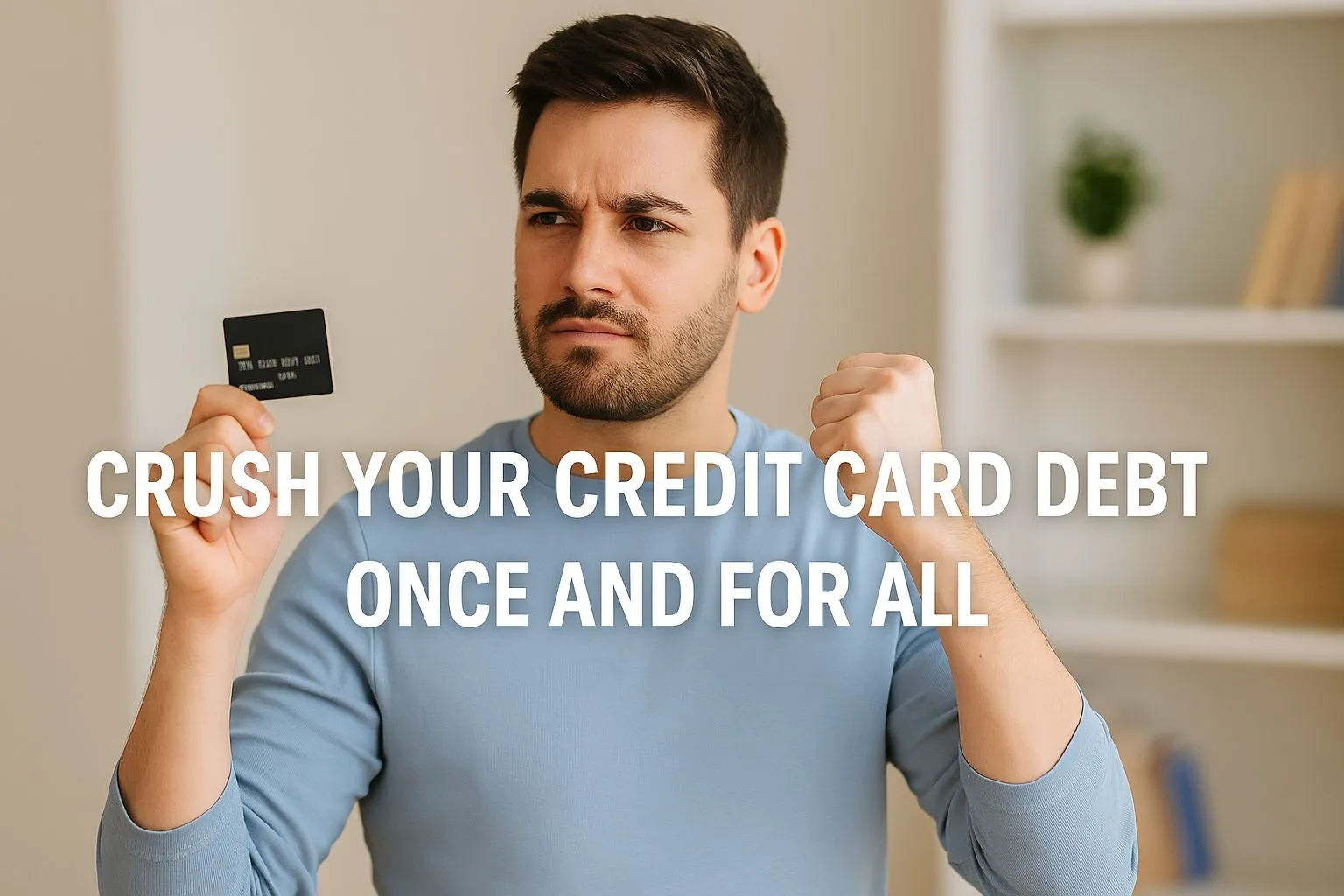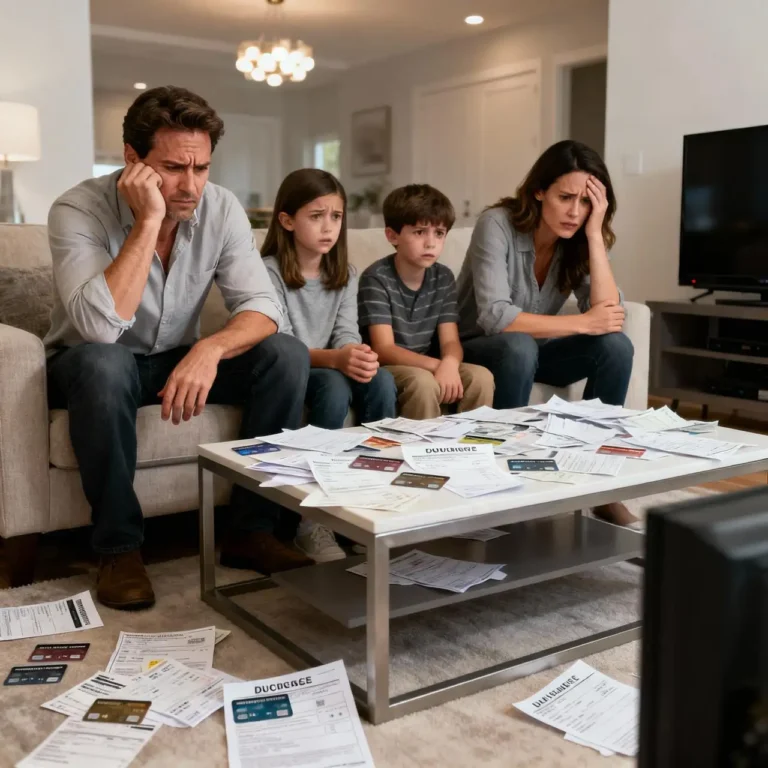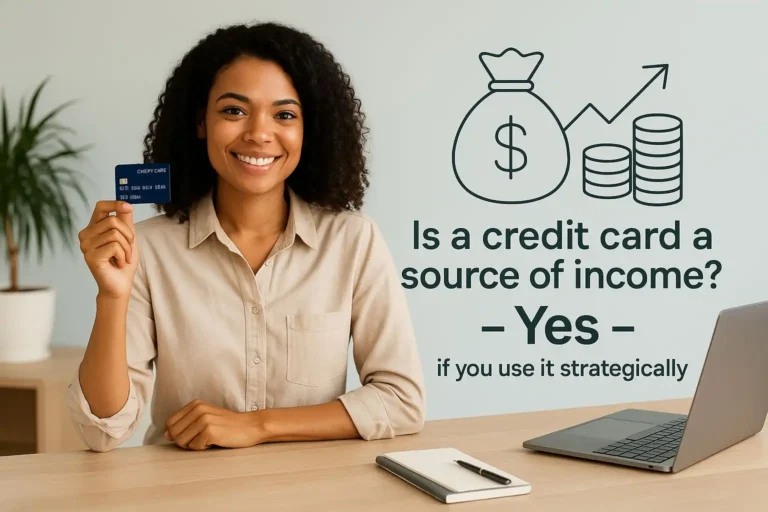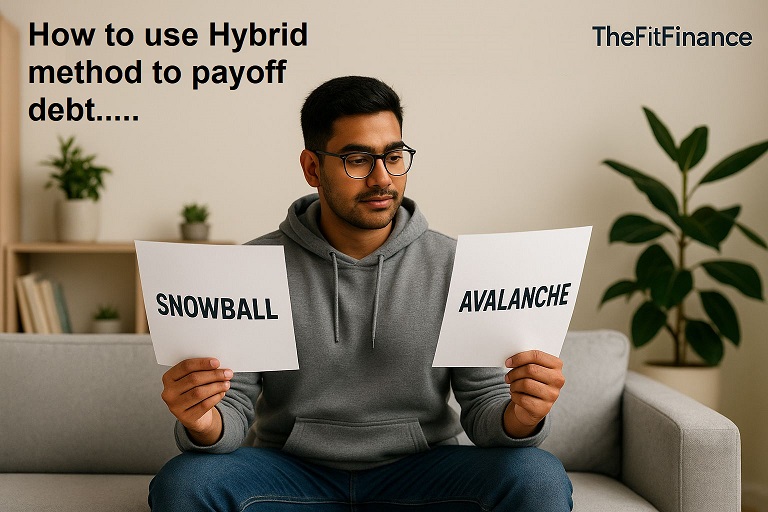Originally Published: March 2025 | Last Updated: September 2025
A Fresh Start to Debt Freedom
Every month that high-interest credit card interest compounds, your balance quietly grows — turning a manageable bill into a multi-year burden. If you want to pay off credit card debt faster, you need a plan that attacks interest, behaviour, and cash flow at the same time. The average APR on credit cards is above 20% for many borrowers, so even small choices matter. In this post you’ll get a battle-tested roadmap: how to map your debt, choose the right payoff strategy, restructure interest when possible, and stop the spending-and-repair cycle for good. Read this, adopt one micro-action today, and you will be closer to the day you can honestly say you have begun to pay off credit card debt for good.
1) Understanding the Debt Monster — Identify, quantify, and set a target
Why this matters: many people underestimate how fast interest compounds at typical credit-card APRs (20%+), which makes paying only minimums costly.
Actionable steps:
• List each card, balance, APR, and minimum payment in a single spreadsheet or note.
• Calculate the “true cost”: enter balances and APRs into a free online debt calculator to see interest paid if you only pay minimums. (That shock is motivating.)
• Set a payoff deadline (example: 12 months / 24 months). Convert that into a fixed monthly payoff target and a calendar reminder.
Micro-action (5 minutes): Write your three highest-APR balances on a sticky note and the date you want them gone.
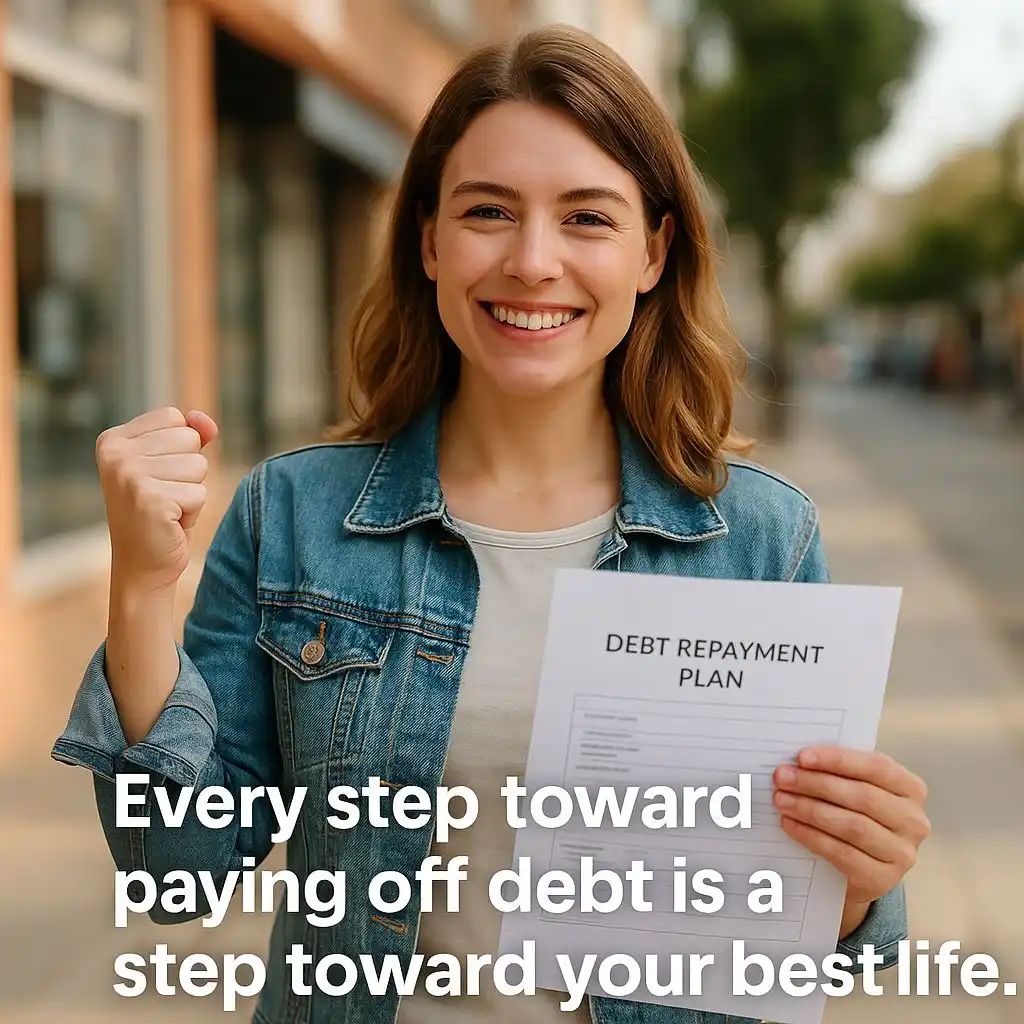
2) The Fastest Ways to Pay Off Credit Card Debt
Here are the 3 fastest options, backed by math and real-world results:
a. Debt Avalanche Method (Fastest Mathematically)
- Attack the highest-interest card first while paying minimums on others.
- Why it’s fastest: saves you the most interest over time, collapsing your balance quicker.
b. Balance Transfer Hack (Fastest for 0% APR Relief)
- If you qualify, a 0% APR balance transfer card gives you 12–21 months to pay off principal interest-free.
- But ⚠️ beware: transfer fees (3–5%) and deadlines matter. Only effective if you’re disciplined.
c. Short-Term Income Sprint (Fastest for Quick Cash Boost)
- 30–60 days of freelance, overtime, or gig work funneled entirely to debt.
- Even $1,000 extra applied to a 25% APR balance saves ~$250/year in interest instantly.
👉 Pro tip: Combine avalanche + balance transfer + sprint for the ultimate “fastest path” trifecta.
3) Psychological Tricks to Pay Off Debt Faster (Most People Ignore This)
Money is not just math — it is emotion. Here’s how to trick yourself into debt freedom faster:
- Visual progress chart: watch balances drop like a video game.
- Debt jars method: every $100 paid off = move $100 monopoly money into a “freedom jar.”
- Accountability partner: tell a friend your debt-free deadline. Peer pressure works.
4) Prioritize Payments: Avalanche vs Snowball (and a hybrid approach)
Short version: avalanche saves the most interest; snowball wins psychologically. Use a hybrid (snowball + avalanche) — avalanche for math, snowball for motivation when needed. Research shows avalanche is usually most efficient but snowball helps many stick to the plan.
How to apply:
• Avalanche: pay minimums on all cards, put extra cash on the highest APR.
• Snowball: pay off the smallest balance first for quick wins.
• Hybrid: target the highest APR card, but when progress stalls, knock out the smallest remaining card to rebuild momentum.
Micro-action (10 minutes): Choose your method this week, and schedule automated extra payments for your chosen target.
5) Quickest Way to Get Out of Credit Card Debt (Mindset + Systems)
The “quickest way” is not only about math. It is about removing friction + building habits.
- Freeze cards today → put them in a drawer or use the “ice method” (literally freeze them).
- Set up autopay + an extra payment the day after payday.
- Use a side hustle challenge → 30 days of Uber Eats, Fiverr gigs, tutoring = 100% extra debt payoff cash.
- Micro-habits: delete shopping apps, unsubscribe from promos, move “spending money” into a separate account.
6) Boost Your Repayment Power: Income + Expense Hacks
You do not need a miracle — small, consistent extra payments accelerate payoff dramatically.
Tactical moves:
• Cut one recurring subscription and redirect that money to debt.
• Short-term income boost: freelance, sell one high-value unused item, or pick up weekend gig — funnel 100% to debt.
• Automate: set an extra payment the day after payday so it’s “invisible.”
• Maintain a mini emergency buffer ($500–$1,000) so one surprise doesn’t force new card use.
Micro-action (this week): List 2 subscriptions you can pause and schedule the auto-payment change.
7) How to Reduce Credit Card Debt Fast (Cutting Costs Without Pain)
You do not always need to earn more — sometimes you just need to reallocate cash flow smarter:
- Cancel unused subscriptions (streaming, gym, apps) → redirect to debt.
- Cut eating out by 2 nights/month → average $50 saved each time = $100/month toward debt.
- Call utility/phone providers → ask for loyalty discounts (saves $20–50/month).
- Pause big purchases until you’re below 30% utilization ratio.
8) Restructure & Negotiate: Lower interest, gain breathing room
Moving or lowering interest can be a game-changer — but do it carefully.
Options & cautions:
• Balance transfers (0% intro APR) can buy interest-free months, but often charge a 3–5% transfer fee and have strict timelines. Do the math before you transfer.
• Debt consolidation loans replace multiple high-APR balances with a single lower-rate loan — only wise if it reduces APR and you won’t rack up new card balances.
• Call your issuer: ask for a rate reduction, hardship plan, or waived late fees. Many issuers will negotiate if you call before missing payments.
• If accounts are near charge-off (6+ months delinquent), talk to a certified credit counselor before settling or negotiating — get written terms. Charge-offs typically happen around six months of nonpayment.
Micro-action: If you have one card above 25% APR, call that issuer this week and ask politely for a rate review or hardship options.
9) Stop the Cycle: Behavior change & credit repair
Long-term fixes require habits, not just math.
Practical habits:
• One-card-at-a-time rule: keep one card active for essentials (groceries/gas) and pay it off each month.
• Implement friction: remove saved cards from apps and delete easy checkout wallets.
• Track wins: a chart showing falling balances beats guilt; celebrate small milestones.
• If you’ve had missed payments, consider rebuilding with small secured card or credit-builder loan after balances are handled.
Micro-action: Remove one stored payment method from an online account today.
10) Tools, timelines & immediate next steps
• Use a free debt calculator to estimate months-to-payoff given extra monthly payment.
• Consider free nonprofit credit counseling if overwhelmed.
• Set a 30-day sprint: pick one small hack (cancel subscription, sell one item, call issuer) and put proceeds to your top target.
Final nudge: pick one micro-action above and do it today — that single step starts inertia toward your plan to pay off credit card debt.
11) Quick Comparison: Fastest Debt Payoff Strategies
| Strategy | Speed | Best For | Warning |
|---|---|---|---|
| Avalanche | Fastest overall | Saving on interest | Requires discipline |
| Snowball | Fastest motivation | Small balance wins | Costs more in interest |
| Balance Transfer | Fast if 0% APR | High balances, good credit | Fees + promo deadlines |
| Debt Consolidation | Medium-fast | Multiple high APR cards | Only works if spending stops |
| Side Hustle Sprint | Fastest cash boost | Short-term payoff | Requires extra effort |
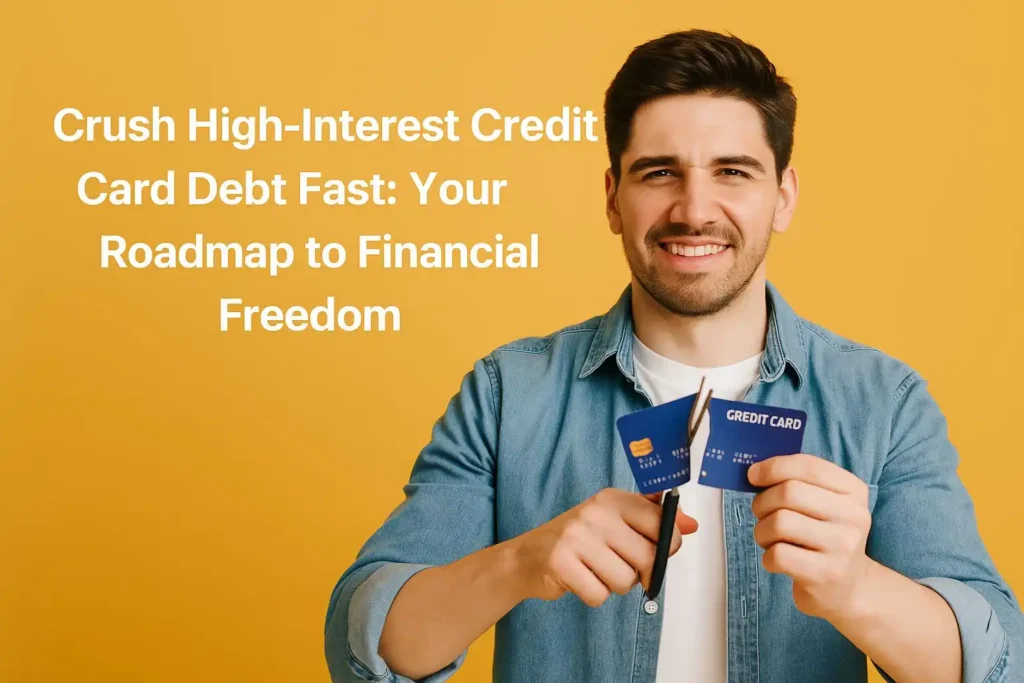
Bonus Tips — Fast, Practical Ways to Pay Off Credit Card Debt
If your priority is to pay off credit card debt quickly, you don’t need magic — you need a plan, momentum, and a few tactical moves. These bonus tips are field-tested and designed to move the needle fast.
1. Freeze the spending — create friction
• Turn off one-tap payments (Apple Pay/Google Pay), remove saved cards on e-commerce sites, and stash one card away. Friction reduces impulse buys. Treat this like training wheels for smarter spending.
2. Build a “payment-first” mini-budget
• Before discretionary spending, allocate an extra payment amount to debt. Even an extra $50–$200 monthly compounds fast when applied to high APR balances. Automate this so it becomes invisible and automatic.
3. Use short-term income boosts to accelerate payoff
• Sell something you rarely use, pick up a 10–20 hour freelance gig for a month, or monetize a skill (tutoring, freelance writing, delivery). Funnel 100% of any extra income to your highest interest card.
4. Rework your interest: balance transfer or consolidation (smartly)
• If you have decent credit, a 0% balance transfer card or a low-rate debt consolidation loan can buy you time to pay principal without interest. Watch transfer fees and the promotional length — only do this if you can pay the transferred balance before the promo ends. (Trusted guides like Bankrate and Discover list options and tradeoffs.)
5. Use the Avalanche + Snowball hybrid
• Put extra cash toward the highest-APR card (avalanche) to minimize interest, but when you need psychological wins, knock out the smallest balance for momentum (snowball). This hybrid preserves math + motivation.
6. Negotiate your rates and ask for hardship help
• Call your issuer before you miss payments. Ask for hardship programs, temporary APR relief, or waived late fees. The Consumer Financial Protection Bureau suggests contacting creditors early and exploring hardship or counseling.
7. Track progress visually
• Use a simple chart or checklist (paid vs outstanding) so each small win is obvious. Seeing progress reduces the temptation to revert to old habits.
8. Protect your emergency fund while attacking debt
• Don’t drain your emergency fund to the point of risk; keep a tiny buffer (e.g., $500–$1,000) so one surprise expense doesn’t force you back to high-interest cards.
9. Use windfalls strategically
• Tax refunds, bonuses, or gifts should be split: a portion to emergency savings and the rest to debt. That keeps life stable while collapsing balances fast.
10. Smart habit: pay more than the minimum every payment cycle
• Minimums fuel the interest machine. Even 25–50% larger payments drastically reduce total interest and months to payoff.
You Love to Read Related Articles
Is a Credit Card a Source of Income? “YES”– 12 Powerful Path
Investing in Shares~ Hobby, Need, or Addiction? 6 powerful Lesson
FAQs (Frequently Asked Questions)
Q1 — I’m broke. How do I pay off credit card debt when I have no money?
A: When cash is zero, the priority is survival + triage. Add up essential income vs fixed expenses. Stop interest growth by paying at least the minimums if possible. If you truly cannot pay minimums, call your issuer and explain: ask about hardship plans, temporary forbearance, or a reduced payment plan. The CFPB recommends contacting issuers early and considering nonprofit credit counseling if you need help negotiating. You can also reduce nonessential costs (subscriptions, dining out) and apply any temporary extra income to the most punitive APR first.
Q2 — What happens if I don’t pay my credit card for 3 months? Three months in a row? A year?
A: Missing payments quickly escalates: late fees, penalty APRs, and reported late payments that harm your credit score. Around ~90–180 days past due, accounts may be charged off and sold to collections; charge-offs and collection entries typically remain on credit reports for up to 7 years from the first missed payment. Continued nonpayment can lead to collection calls, third-party collectors, and in some cases legal action. That’s why proactively reaching out to creditors is better than avoiding them.
Q3 — Should I stop paying and “deal with collectors” if my card is maxed out?
A: No — stopping payments voluntarily makes things worse (late fees, damage to score, charge-offs, legal risk). Instead: call the issuer to ask about hardship programs, consider debt consolidation, or consult a nonprofit credit counseling agency. Settling or negotiating should be done carefully, ideally after getting written confirmation of any agreement.
Q4 — Is it advisable to close a maxed out card that’s current on payments?
A: Closing a card can raise your credit utilization ratio (bad for score) and shorten your average account age (also negative). If the account has no annual fee, keep it open and pay it down; if closing is needed, consider first paying it to a small balance and then closing. Think strategically rather than emotionally.
Q5 — What are the most effective strategies to pay off credit card debt? (smartest/fastest/“tricks”)
A: Effective strategies include: the debt avalanche (focus on highest APR), the debt snowball (smallest-balance wins), hybrid approach, balance transfers for temporary 0% APR, consolidation loans, and negotiating lower APR with issuers. Automation, a payment-first budget, and temporary income boosts are “tricks” that reliably speed payoff.
Q6 — Why do people keep using cards even when they have debt?
A: Habit, convenience, rewards (cashback/points), and the illusion of “delayed payment” fuel ongoing use. Emotional reasons (retail therapy, status) and lack of friction also cause repeated use. Turning off autopay for non-essentials and forcing a one-card-at-a-time rule helps break the cycle.
Q7 — What is the 2-3-4 rule for credit cards?
A: This usually refers to issuer application limits (Bank of America’s 2/3/4 policy): no more than two BofA cards in 30 days, three in 12 months, four in 24 months. It’s not a personal-finance rule; it’s a bank’s underwriting policy for new card approvals. Don’t confuse issuer rules with personal debt strategies.
Q8 — How do I escape credit card debt when it feels impossible?
A: Break it into tiny actions: list balances & APRs, pick a target method (avalanche or snowball), automate payments, boost income briefly (side hustle), call creditors for relief if needed, and get a free session with a nonprofit credit counselor. Small, consistent steps beat giant, sudden efforts.
Q9 — What is the fastest way to pay off $10,000 in credit card debt?
A: Use the debt avalanche with a side hustle sprint. If you pay $800/month instead of $300, you can collapse $10K in ~14 months vs 5+ years on minimums. A 0% balance transfer card can shorten it further if you qualify.
Q10 — How do I pay off credit cards fast without extra money?
A: Focus on reducing expenses: cut 2–3 recurring bills, pause discretionary spending, and redirect every $10–20 saved toward debt. Even without new income, trimming $150/month from expenses cuts years off repayment.
Q11 — Is it possible to get rid of credit card debt in 1 year?
A: Yes, if balances are under $15K and you combine avalanche + income boost + strict expense cuts. Create a 12-month debt calendar with fixed monthly targets. Consistency is key.
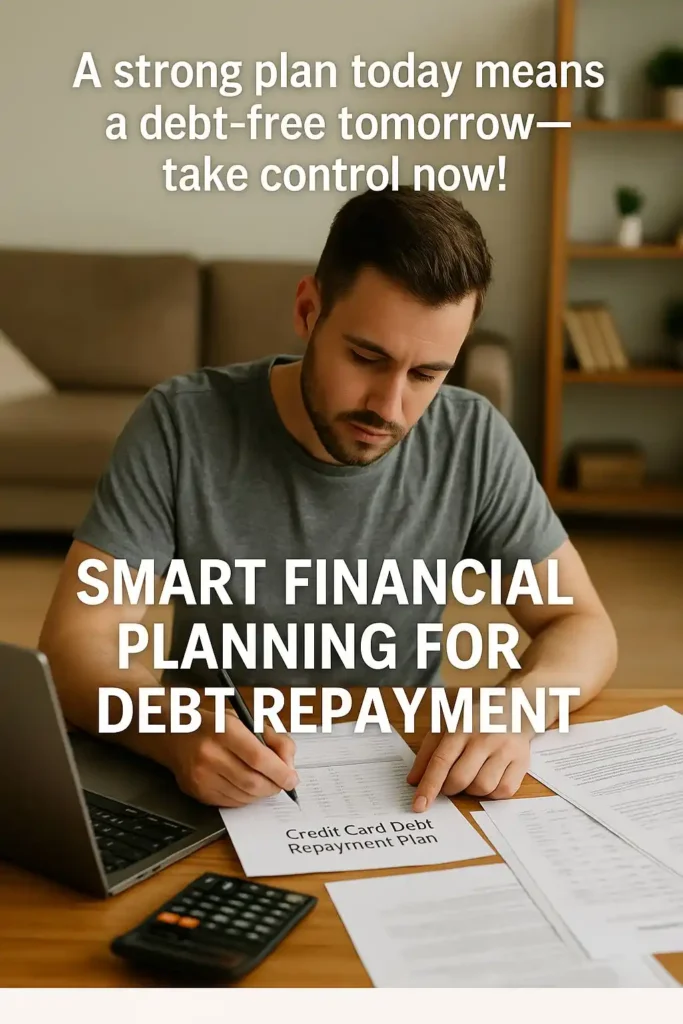
Common Mistakes
1. Paying only the minimum — the classic trap. Minimums prolong debt for years and multiply interest.
2. Chasing new cards for rewards while balances remain high — rewards disappear if interest outstrips them.
3. Closing old accounts impulsively — this can raise utilization and lower average age, hurting credit.
4. Ignoring creditor communication — silence removes options (hardship programs, temporary relief).
5. Using consolidation without a behavior change — consolidation lowers payments sometimes, but if spending habits remain, you’ll refill balances.
Avoid these by focusing on behavior change: spending friction, automation, and accountability.
(Short source: Factual consequences of missed payments & charge-offs are widely documented by Bankrate, Experian, and the CFPB.)
Reflection Exercise
Take 10 minutes. Write answers to the following (no editing, just thoughtfully):
1. What is my total credit card balance right now? List each card and interest rate.
2. Which two expenses this month can I trim and reallocate to debt payments? (Be specific: cancel X subscription; cook eat-out dinners Y times less.)
3. Which payoff method better fits my temperament — the numbers-first avalanche or the momentum-building snowball? Why?
4. What one extra income step could I try this month (sell one item, freelance 5 hours, get a weekend gig)?
5. What’s the exact date I will make my next extra payment toward my highest-APR card?
Make a private commitment: set calendar reminders for your payments and schedule a call with your issuer if you’re leaning on hardship help. The act of writing + scheduling turns vague willpower into real momentum.
Conclusion: Your Journey to Financial Empowerment Starts Now
In our quest to overcome high-interest credit card debt, every step—from mapping your debt to choosing the right repayment strategy and boosting your income—plays a crucial role in reclaiming your financial freedom.
Remember, it’s not about perfection—it’s about progress. Every $1K you pay off now saves $260/year in interest. That is a return even S&P 500 investors would envy.
Now is the time to act, empower yourself, and set a precedent for a debt-free future.
Remember, just as every marathon begins with a single step, your journey to financial freedom builds on every smart decision—check out our previous post on “Smart Budgeting Secrets” to keep the momentum going!
Embark on your journey today—because every day without high-interest debt is a day closer to your dreams.

